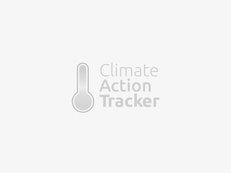Publications (USA)
Climate pledges will bring 2.7°C of warming, potential for more action
With 158 climate pledges now submitted to the UN, accounting for 94% of global emissions, the Climate Action Tracker today confirmed this would result in around 2.7°C of warming in 2100 – if all governments met their pledge. “This level of warming is still well above the agreed limit of read more...
G20 - all INDCs in, but large Gap remains
The 2015 G20 Summit, (Turkey, 15-16 November) will see Heads of State and Government meet to discuss, among other issues, development, energy and climate change finance.All G20 members have presented their “intended nationally determined contributions” or INDCs, to the UNFCCC for the Paris Agreement. The Climate Action Tracker (CAT) has read more...
The CAT emissions gap – How close are INDCs to 2 and 1.5°C pathways?
Government climate action would see warming well beyond 2°C – analysisThe climate targets so far submitted to the UN by governments collectively lead to global emissions far above the levels needed to hold warming to below 2°C, the Climate Action Tracker said today.The analysis by the consortium of four research read more...
Will an in increase in share of renewable power in Brazil and United States be enough to curb emissions to levels consistent with necessary reductions in the countries?
The 20% goal for renewables in the US and Brazilian power sectors is a step in the rightdirection. The main positive point is that it is an example of countries agreeing to worktogether on their way to low carbon economy. In both, Brazil and the United States long-termpolicies ensuring investment read more...
G7+EU INDCs: some improvement, but a large emissions gap remains
The combined climate plans for the G7 and EU have made a small step towards the right track to hold warming to 2?C, but there is still a substantial emissions gap, the Climate Action Tracker said today.Ahead of the upcoming G7 meeting in Germany, the Climate Action Tracker - an read more...
Are governments doing their “fair share”? - New method assesses climate action
Climate Action Tracker assesses government climate proposals on what’s “fair” and holds warming below 2?C.The Climate Action Tracker (CAT) has developed the most comprehensive method yet of simultaneously assessing the “fairness” and “below 2?C compatibility” of government climate action put forward for the Paris Agreement, expected to be adopted in read more...
China, US and EU post-2020 plans reduce projected warming
For the first time since 2009 the Climate Action Tracker calculates a discernibly lower temperature increase than previously estimated because of new proposed post-2020 actions.Recent announcements by China, the United States and European Union, who comprise approximately 53% of global emissions, indicate a rising level of ambition, which are reflected read more...
China and US increase climate ambition: Improvements needed in 2015
The Climate Action Tracker has undertaken an initial assessment of the recent announcements by the United States and China’s new pledges and proposals on emissions reductions for 2025 and 2030, in the context of the present international negotiations for a new climate agreement to be adopted at the end of read more...
China and the US: how does their climate action compare?
Together, China and the US emit about 35% of today’s greenhouse gas emissions. Current global climate change action is insufficient to limit warming below 2°C. By improving action of China and the US to global best practice, these two largest emitters could decrease domestic emissions to a level compatible with read more...
Below 2°C or 1.5°C depends on rapid action from both Annex I and non-Annex I countries
Deeper cuts needed by all sooner, especially in energy and industry, to keep to 2°CAll governments will have to significantly increase their action on climate change – both before 2020 and after, reducing total global greenhouse gas emissions to zero between 2060 and 2080, to keep warming to 2°C.To achieve read more...
Stay informed
Subscribe to our newsletter
